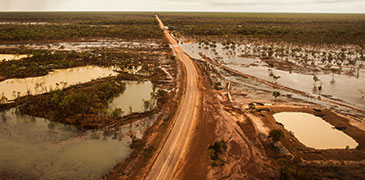Review your travel plans
It is important to review your travel plans if the region you are travelling through has or is likely to experience flooding. Floodwaters can isolate communities for days, weeks or even months.
Keep your fuel tank topped up
Access to service stations can be limited. In the event of a flood, queues will be long and fuel supplies may be interrupted. Keep your tank as full as possible during your trip and carry spare fuel.
Never drive through floodwaters
You might not be able to see the dangers, but it doesn’t mean they aren’t there.
Pack a waterproof emergency kit
You must have an emergency kit when travelling in WA to keep yourself and others safe.
Tell someone about your travel plans
Ensure someone knows your travel plans, including when you will be travelling between destinations. Let them know when you have arrived safely.












